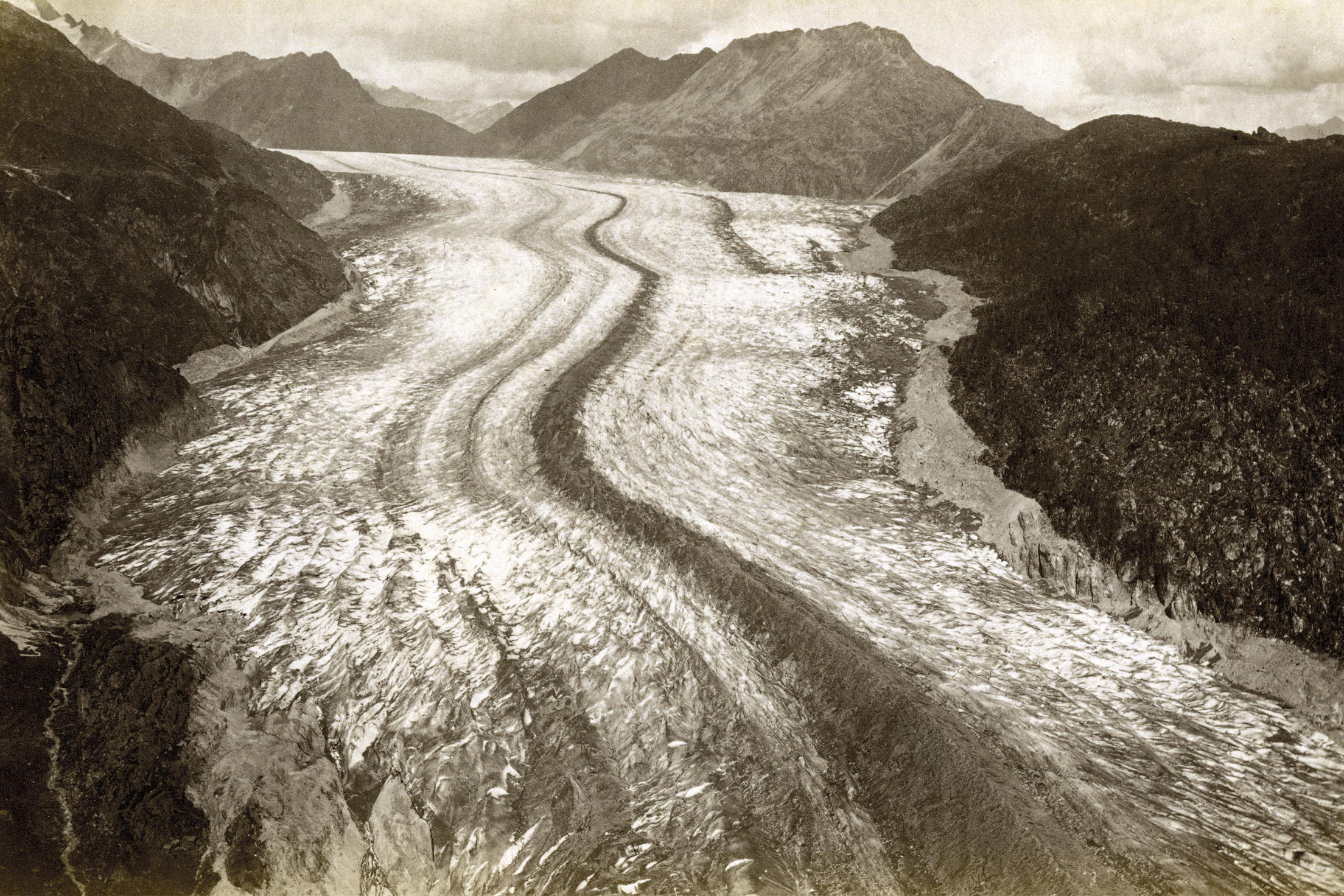
British-Swiss study reveals more glacier-shielding rock debris

The amount of rock debris covering the world’s glaciers is larger than previously thought – something that hasn’t been considered in models of melting glaciers and rising sea levels.
The study, run by Britain’s Northumbria University and the Swiss Federal Institute for Forest, Snow and Landscape Research (WSL), involved examining satellite imagery of every glacier in the world to manually verify the level of debris cover.
Three years and 923,000 square kilometres’ worth later, the researchers found that some 29,000 square kilometres were covered by such debris – that’s about 75% of the surface area of Switzerland.
“We now know that debris cover is present on almost half of Earth’s glaciers, with 7.3% of the world’s total mountain glacier area being covered,” lead researcher Sam Herreid stated in a media relaseExternal link.
He also said that this information is important since previous models have omitted such debris cover from forecasts about how glaciers respond to changes in the climate.
Such debris forms when glaciers shrink and the eroded rock slides down the mountainsides to gather on the ice surface. There, it can form a thick protective layer, reducing the rate of melting.
“When we consider that much of this debris cover is located at the terminus, or toe, of a glacier where melt would usually be at its highest, this percentage becomes particularly important with respect to predicting future water resources and sea level rise,” said Herreid.
Young and old
Using the debris data, the project also came up with a new way of analysing how glaciers will evolve over the coming centuries.
Classifying glaciers as “young” and icy or “old” and rock-covered, the researchers integrated possible changes in the rate of mountain erosion to models of glacier melt, and thus “were able to place each glacier on a conceptual timeline and learn roughly how far along this line each is to becoming almost entirely covered in rocks.”
Francesca Pellicciotti of the WSL said the findings of this classification showed that “the bulk of glaciers that have a debris cover today are beyond a peak debris cover formation state and are trending closer to the “old” Himalayan glaciers that might not be around for much longer”.
The study was published in the Nature GeoscienceExternal link journal.

More
Glaciers in the Alps – before and after

In compliance with the JTI standards
More: SWI swissinfo.ch certified by the Journalism Trust Initiative




























You can find an overview of ongoing debates with our journalists here . Please join us!
If you want to start a conversation about a topic raised in this article or want to report factual errors, email us at english@swissinfo.ch.